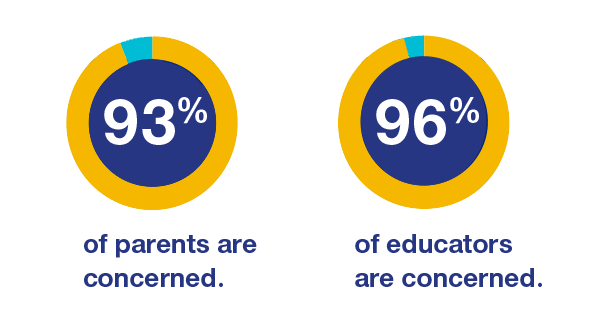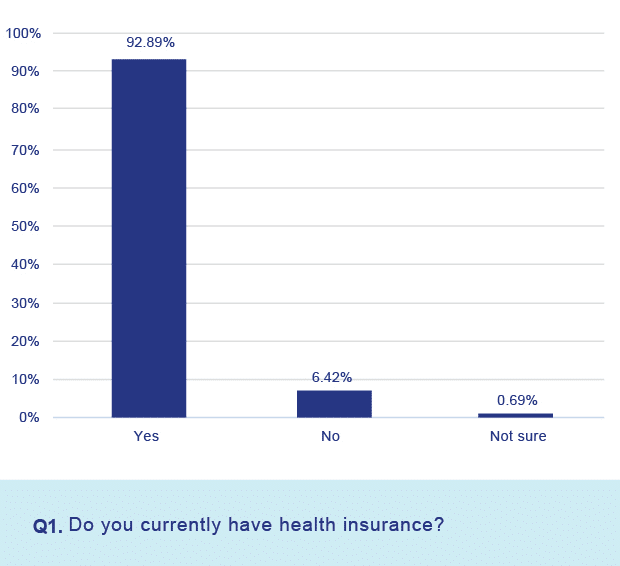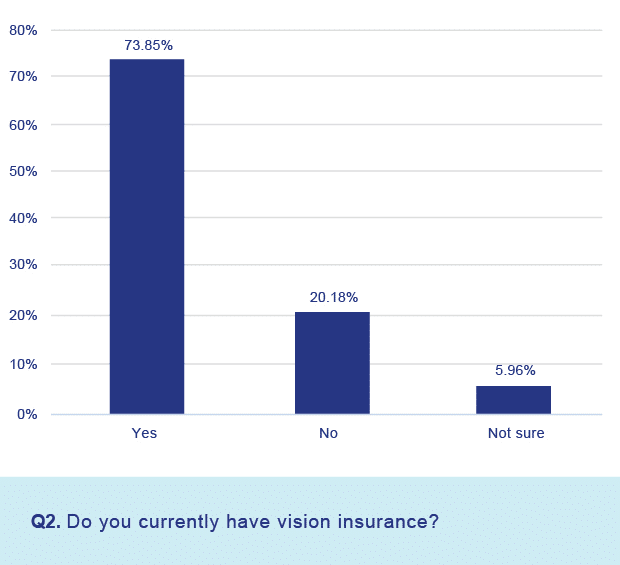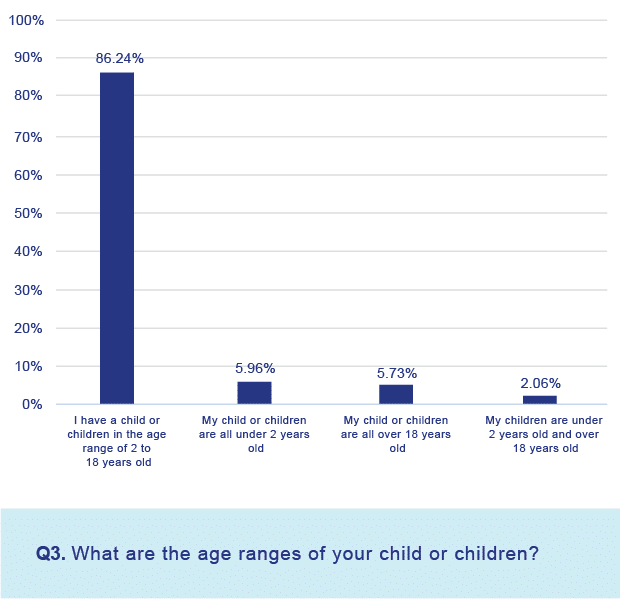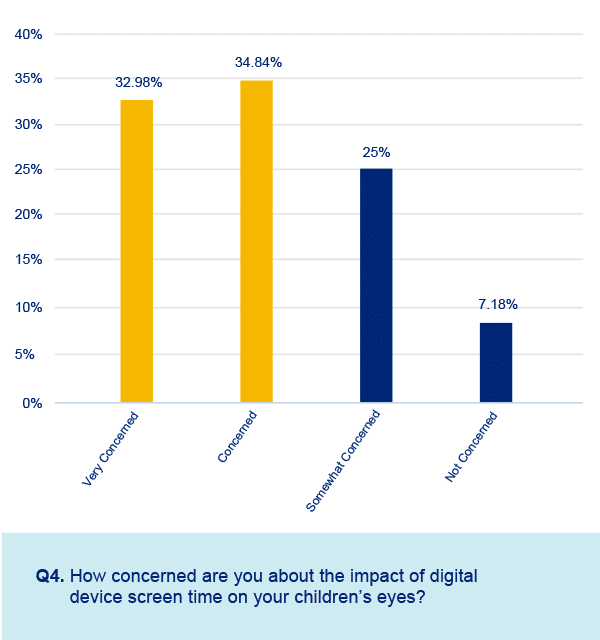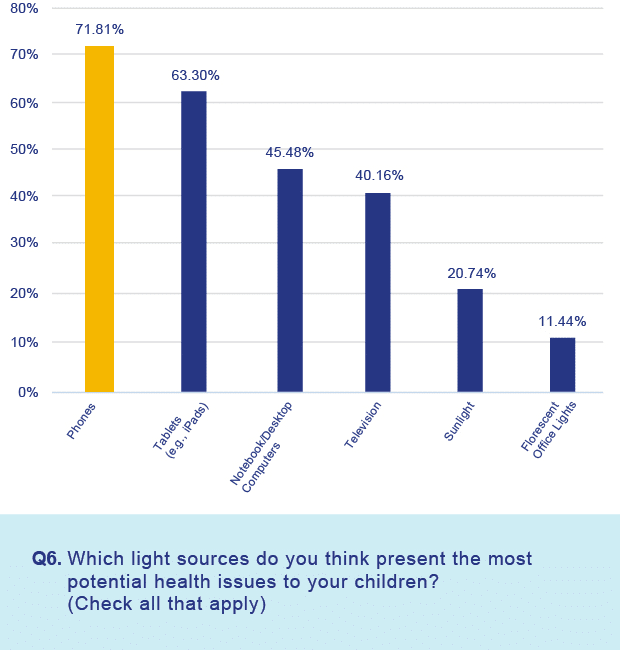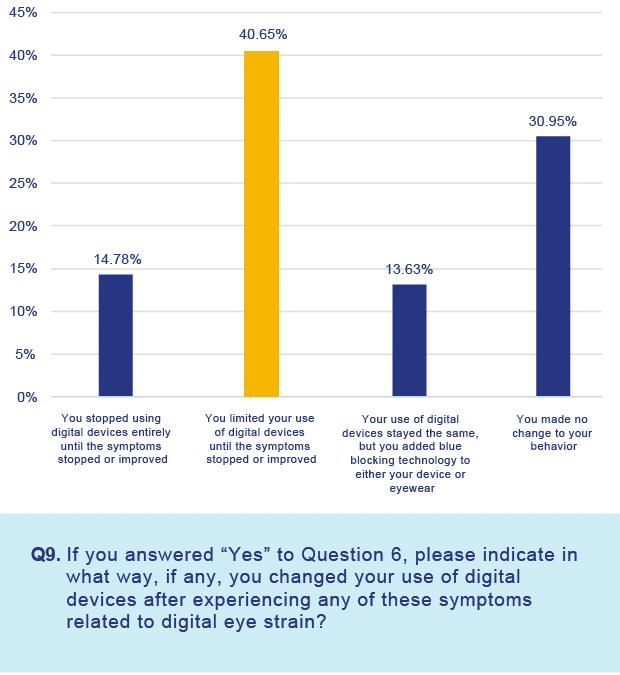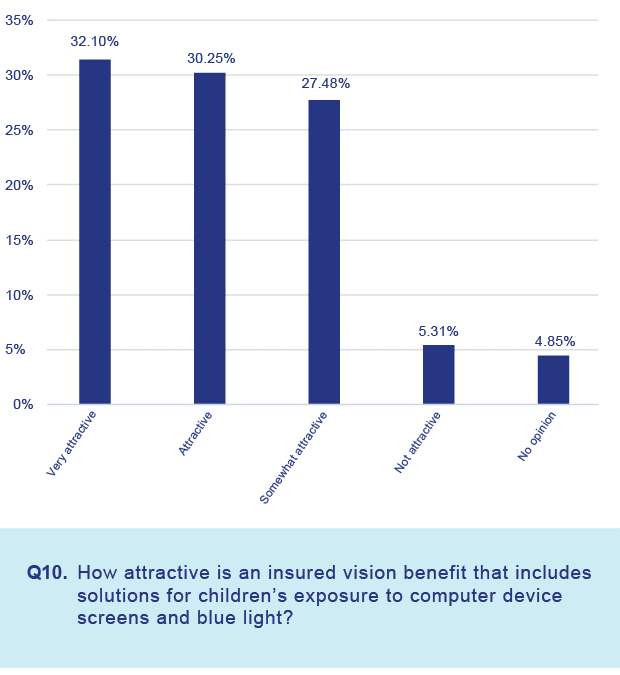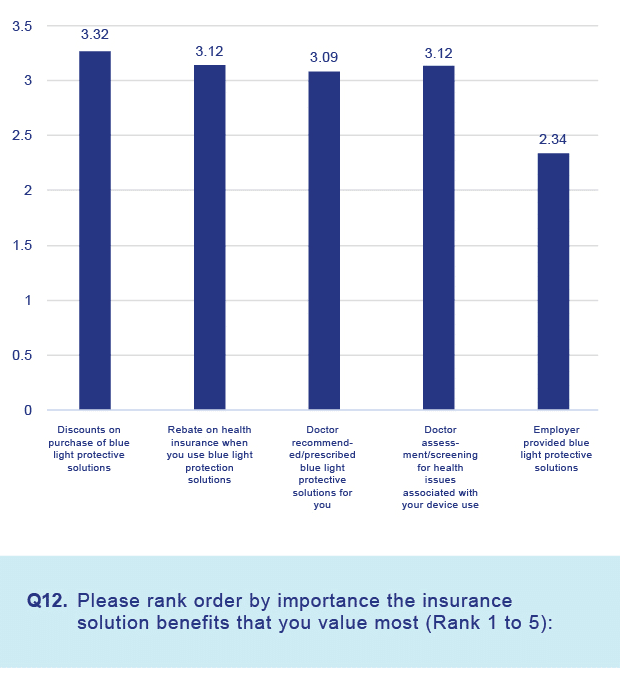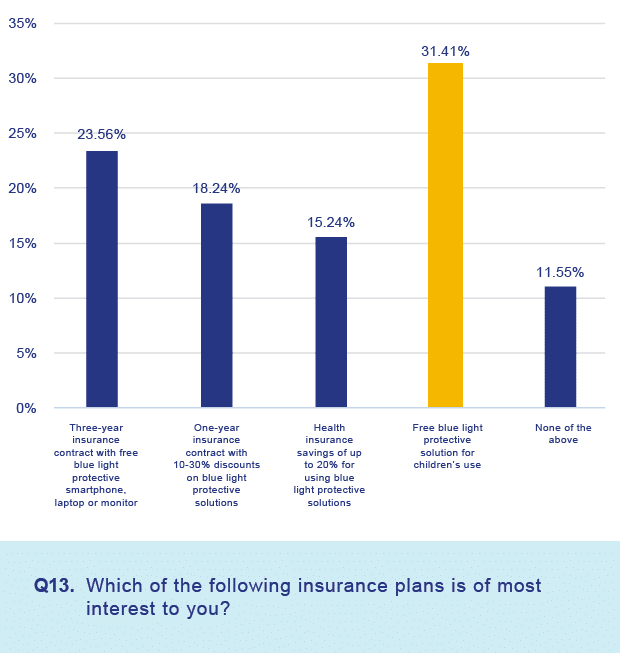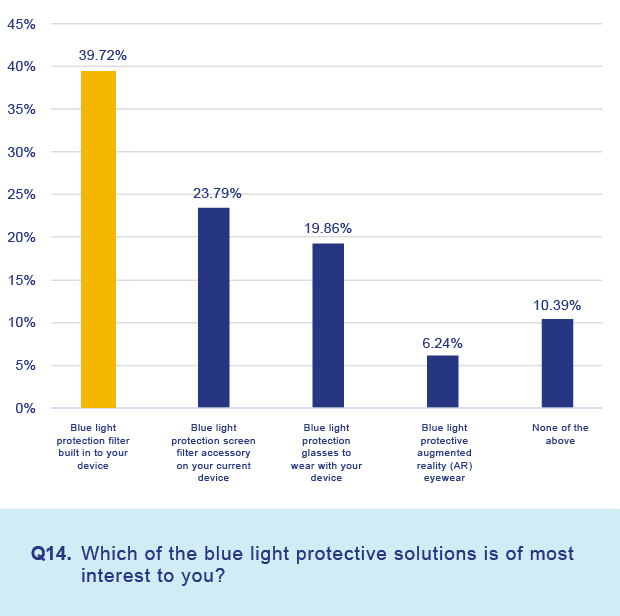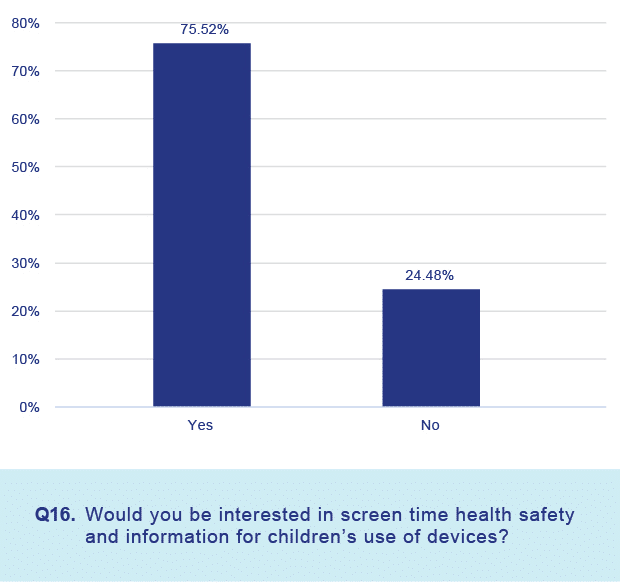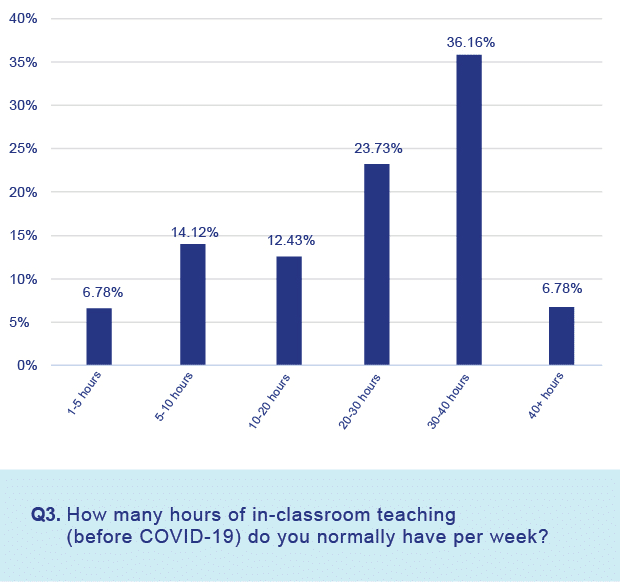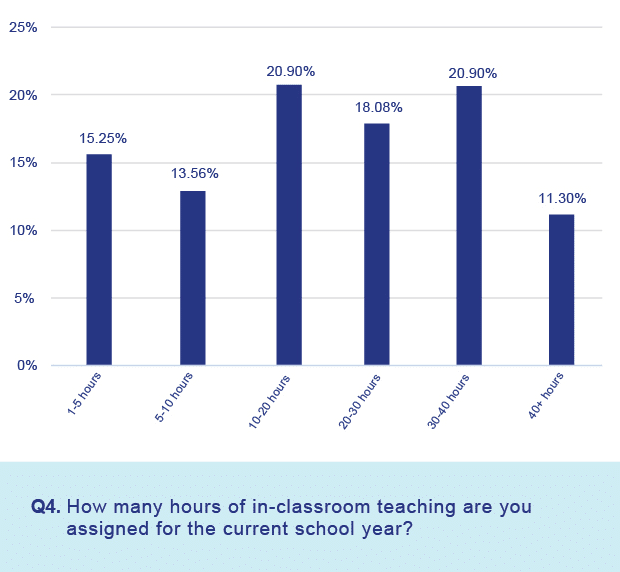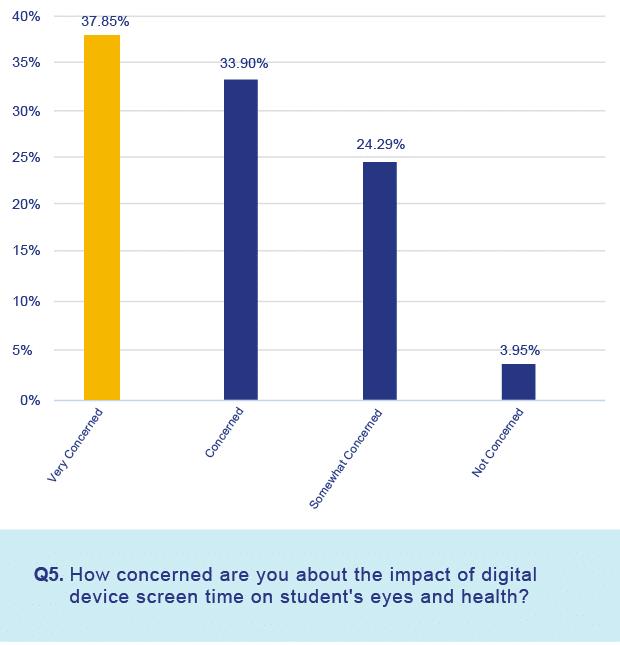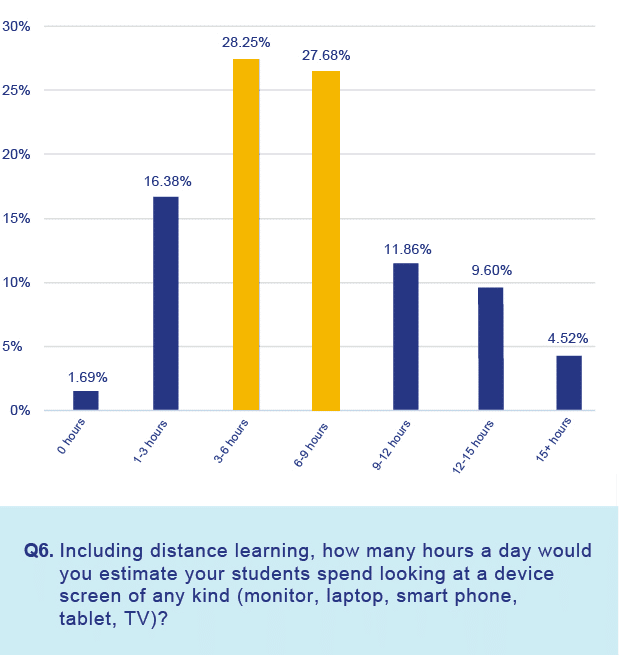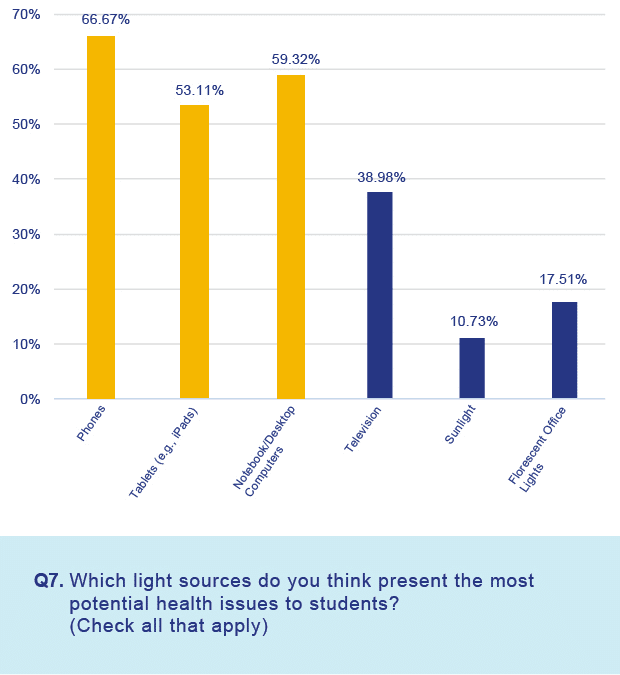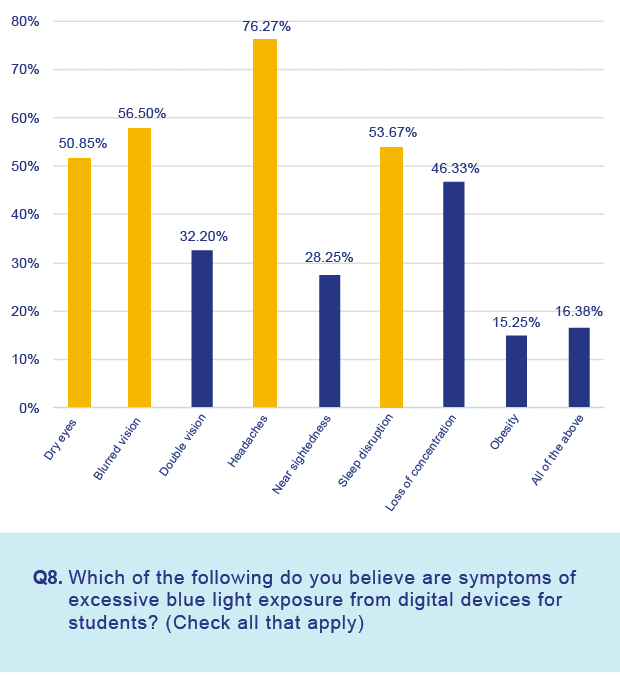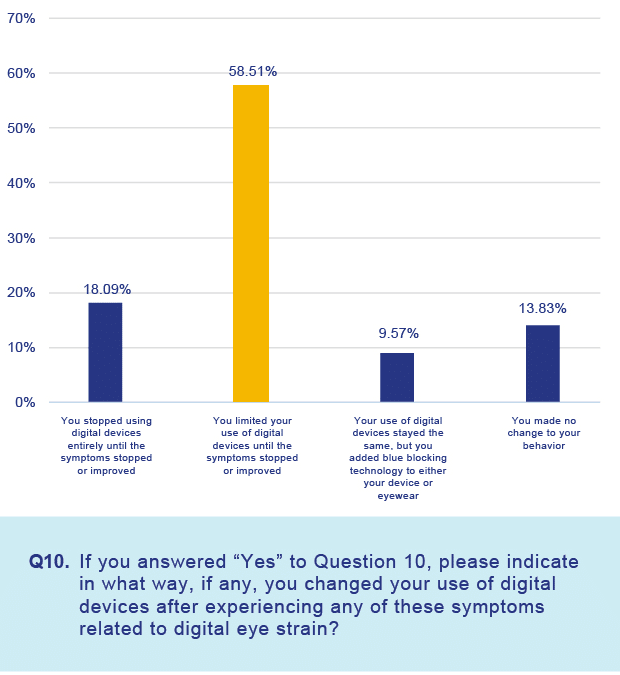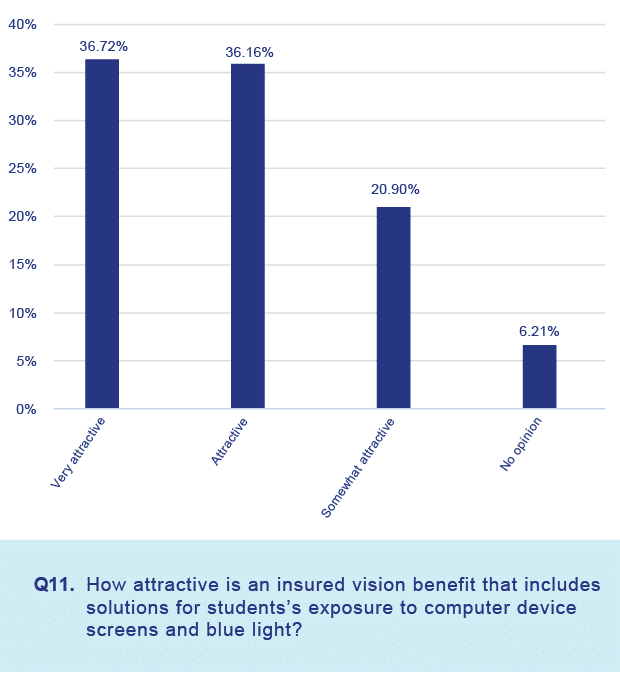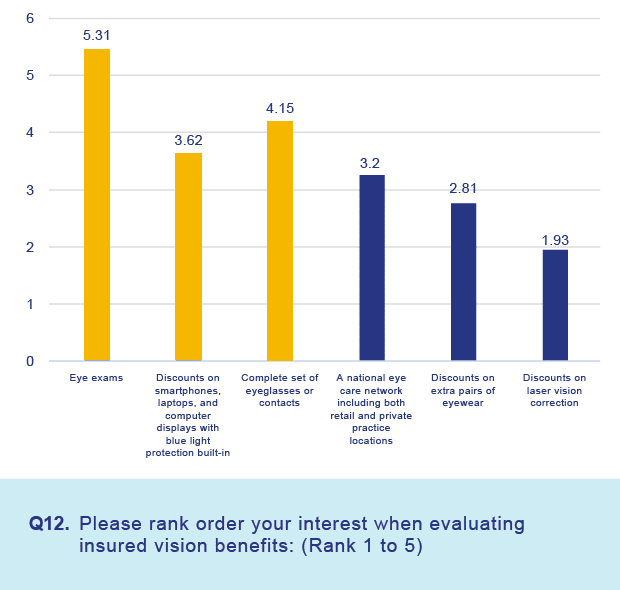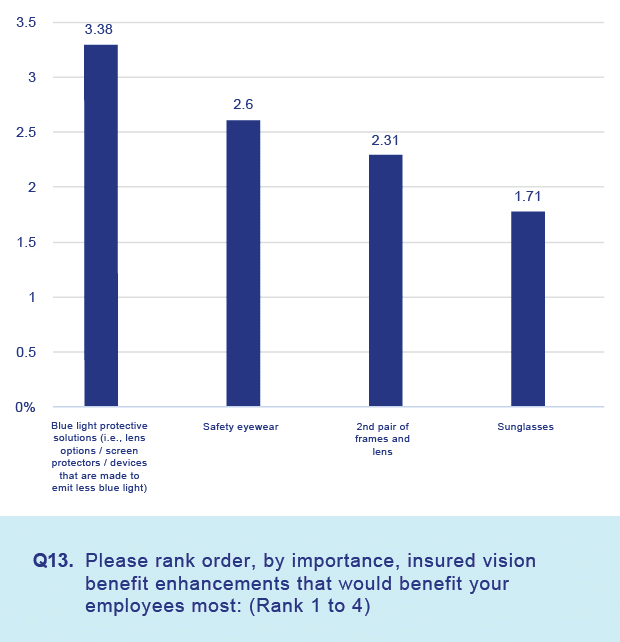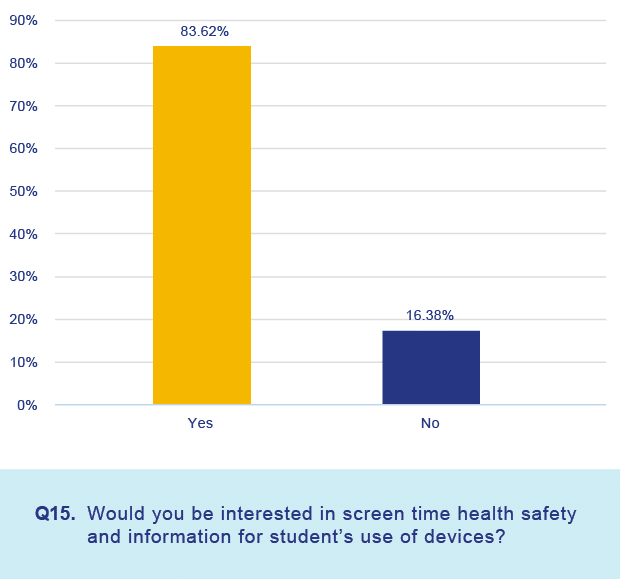Screen Time Survey of Parents & Educators, September 2020
As many young people return to school and remote learning becomes more common, parents should remember that good eye health is important for everyone. This is especially true for students, as 80% of what children learn is through their eyes.1
Highlights of the Screen Time Survey of Parents and Educators:
- 93% of parents and 96% of educators are “very concerned” to “somewhat concerned” about the impact of digital device screen time on children’s eyes.
- The most common symptoms of excessive blue light exposure from digital devices for children are headaches (67%), blurred vision (56%) and dry eyes (49%).
- A vision insurance plan that includes blue light protective solutions was ranked No. 1 by 62% of teachers in the survey.
- The benefits teachers most expect from blue light protection include attention improvement for students (64%), improved peace of mind for educators (58%) and sleep improvement for students (54%).
The parents survey includes responses from 436 parents collected in September 2020. It was completed with a custom demographic including female and male parents based in the U.S. It was conducted through Survey Monkey, with full results found here and in the enclosed data file summary.
Demographics of Parents Survey:
• 57% female and 43% male
• Living in the United States
• 23% age 18-29, 44% age 30-44, 30% 45-60 and 4% >60
Screen Time Parents Survey 2020 Results
Vision Plan Coverage
93% of parents surveyed identified currently having health insurance and 74% identified currently having vision insurance (Q1, Q2)
Age Range of Children of Parents in the Survey
86% of parents surveyed have a child or children in the age range of 2 to 18 years old (Q3)
Screen Time Impact Concerns the Majority of Parents
93% of parents are “Very Concerned” to “Somewhat Concerned” about the impact of digital device screen time on their children’s eyes (Q4)
Children Spend Much of Their Waking Hours on Devices
74% of parents identify that their children spend at least 3 hours per day looking at a device screen and 40% identify that their children spend more than 6 hours per day looking at devices (Q5)
Phones and Tablets Cited as Biggest Health Concern
The light sources that parents believe present the most potential health issues to their children include phones (72%) and Tablets, e.g. iPads (63%). The least cited light sources by parents were Sunlight (21%) and Florescent Office Lights (11%) (Q6)
Symptoms of Excessive Blue Light Exposure
The most common symptoms parents believe are symptoms of excessive blue light exposure from digital devices for their children are Headaches (67%), Blurred Vision (56%) and Dry Eyes (49%) (Q7)
Majority of Parents Also Experience Symptoms of Blue Light Exposure
66% of parents identified that they have experienced symptoms associated with excessive use of digital devices and blue light exposure, also known as digital eye strain (Q8)
Parents Have Various Strategies to Reducing Symptoms
Of those that answered “Yes” to question eight, the most common responses to how they changed their use of digital devices after experiencing any symptoms related to digital eye strain were: “You limited your use of digital devices until symptoms stopped or improved” (41%) and “You made no change to your behavior” (31%) (Q9)
Parents View Insurance Coverage as Attractive
90% of parents believe an insured benefit that includes solutions for children’s exposure to computer device screens and blue light is “Very attractive” to “Somewhat attractive” and 32% believe the insurance benefit is “Very attractive” (Q10)
Both Exams and Protective Solutions Viewed as Important
When evaluating insured vision plans, benefits parents most value includes “Eye Exams” (ranked #1 by 36%), “Blue light protective solutions” (ranked #1 by 26%), and “A national eye care network including both retail and private practice locations (ranked #1 by 24%) (Q11)
Blue Light Protective Solutions Ranked No. 1
Among blue light protection benefits, parents identified valuing most “Discounts on purchase of blue light protective solutions” (ranked #1 by 28%) and “Doctor assessment/screening for health issues associated with your device use (ranked #1 by 23%) (Q12)
Free Protective Solutions for Children Attract the Most Interest
Among insurance plan options outlined, parents identified most interest in “Free blue light protective solutions for children’s use” (31%) and “Three-year insurance contract with free blue light protective smartphone, laptop or monitor (24%) (Q13)
Protection Built into Devices Ranked No. 1
Blue light protection product solutions of most interest to parents are “Blue light protection filter built in to your device” (Primary solution by 40%) and “Blue light screen filter accessory on your current device” (Primary solution by 24%); ranked above “Blue light protection glasses to wear with your device (Primary solution by 20%) (Q14)
Long Term Eye Health, Sleep and Mood Improvement are the Expected Benefits
By providing blue light protection for their children, primary benefits expected by parents includes “Long term eye care health” (69%) and “Sleep improvement and mood” (60%) (Q15)
Majority are Interested in Health and Safety Information
76% of parents would be interested in screen time health and safety information for children’s use of devices (Q16)
Screen Time Educator Survey 2020 Results
The survey included responses from 177 teachers, collected in September 2020. It was completed with a custom demographic including full-time and part-time teachers based in the U.S., with survey data collected with SurveyMonkey.
Demographics of Educators Survey:
• 5% male and 65% female
• Working in the United States
• 40% age 30-44, 35% 45-60 and 21% 18-29
Amid COVID-19, Teachers Estimate Having Fewer In-Classroom Hours
77% of teachers reported working between 10-40 hours of in-classroom teaching per week before COVID-19, and 60% of teachers estimate between 10-40 hours of in-classroom teaching per week for the current school year after COVID-19 (Q3, Q4)
Teachers are Concerned About the Impact of Screen Time
96% of teachers surveyed are “Very Concerned” to “Somewhat Concerned” about the impact of digital device screen time on student’s eyes and health (Q5)
Most Teachers Estimate Student Screen Time at 3-12 Hours per Day
68% of teachers surveyed estimate that students spend 3-12 hours per day looking at a device screen including monitors, laptops, smartphone, and TV, including distance learning (Q6)
Among Light Sources, Phones, Notebooks and Desktops are Identified Most for Potential Health Issues
Phone and Notebook/Desktop Computers were identified as light sources that teachers believe present the most potential health issues to students (Q7)
Multiple Symptoms are Associated with Excessive Blue Light Exposure
Most common symptoms identified by teachers from excessive blue light exposure from digital devices for students includes (Q8):
• Headaches (76%)
• Blurred Vision (57%)
• Sleep Disruption (54%)
• Dry Eyes (51%)
Majority of Teachers Have Experienced Digital Eye Strain
53% of teachers identify that they have experienced symptoms associated with excessive blue light exposure, also known as digital eye strain, 29% estimate that they have not experienced symptoms and 18% are not sure (Q9)
Teachers Identify Strategies for Reducing Digital Eye Strain Symptoms
Of those teachers that identify experiencing symptoms of digital eye strain: 59% limited use of digital devices until the symptoms stopped or improved, 18% stopped using digital devices entirely until the symptoms stopped or improved, 14% made no change in behavior and 10% kept use of digital devices the same but added blue light blocking technology. (Q10)
Vision Insurance that Address Screen Time Issues is Attractive
94% of teachers identified that an insured vision benefit that includes solutions for student’s exposure to computer device screens and blue light is “Very Attractive” to “Somewhat Attractive” with 37% identifying “Very Attractive” (Q11)
Teachers Rank Eye Exams for Students as No. 1
Benefit ranked of most interest by teachers when evaluating insured vision benefits includes Eye Exams (ranked #1 by 66%), Discounts on smartphones, laptops and computer displays with blue light blocking (ranked #1 by 14%) and Complete set of eyeglasses or contacts (ranked #1 by 10%) (Q12)
Blue Light Protective Solutions Ranked as the No. 1 Enhancement to Vision Benefit Plans
Insured vision benefit enhancements of most interest by teachers when evaluating insured vision benefits includes Blue light protective solutions (ranked #1 by 62%), Safety eyewear (ranked #1 by 22%) and 2nd pair of frames and lens (ranked #1 by 11%) (Q13)
Attention Improvement, Peace of Mind and Better Sleep are the Expected Benefits
By providing blue light protection for students, benefits most expected by teachers includes:
Attention improvement (64%)
Improved peace of mind as an educator (58%)
Sleep improvement (54%) (Q14)
A Majority of Teachers are Interested in Health and Safety Information for Students
84% of teachers would be interested in screen time health and safety information for student’s use of devices (Q15)
1 https://www.covd.org/page/learning
Request more information
